Pilgrimage routes are not only paths of faith, but also journeys through art and history, immersed in nature, and capable of often leading the pilgrim or traveler to discover little-known and little-visited places. Emilia-Romagna is one of the regions through which the greatest number of spiritual paths pass: in this article we have collected ten of them, we present them to you!
1. The Via Matildica of the Holy Face
284 km starting from Mantua and arriving in Lucca, crossing the Po River, passing through the entire territory of the province of Reggio Emilia, crossing the lands of Matilda of Canossa (hence the name of the path) and the National Park of the Tuscan-Emilian Apennines, among places rich in history and beautiful landscapes. It is divided into three historic sections: the Via del Preziosissimo Sangue (from Mantua to Reggio Emilia, in three stages), the Cammino di San Pellegrino (from Reggio Emilia to San Pellegrino in Alpe, in five stages) and the Via del Volto Santo (from San Pellegrino in Alpe to Lucca, in three stages). An itinerary of faith that ancient pilgrims traveled to venerate the Holy Face in the Cathedral of Lucca and that today surprises everyone with its landscapes and artistic treasures: among many, the castles and fortresses that belonged to Matilda of Canossa. Worth seeing along the way, among the many traces of the past: the abbey of Polirone in San Benedetto Po, the monuments and museums of Reggio Emilia, the Rocca di Canossa, and the Castle of Rossena. The route has its own official website.
 |
| The Castle of Rossena (Via Matildica del Volto Santo). Ph. Credit Giuliano Bianchini |
2. The Via Francigena
The Emilia section of the famous pilgrimage route, first recorded in 990, begins in Piacenza, touches the towns of Fiorenzuola d’Arda, Fidenza, Fornovo di Taro and Berceto, and ends at the Cisa Pass, where the Tuscan section begins. The route is all signposted, and notable artistic gems can be encountered along the stretch: just think of the Cathedral and Gothic in Piacenza, the Cathedral of San Donnino in Fidenza, the parish church of Santa Maria Assunta in Fornovo, or the Cathedral of San Moderanno in Berceto. The Via Francigena is a total of 1,800 km long, from Canterbury to Rome, 143 of which cross Emilia, and it did not have a single route: rather, we must imagine it as a road system that started from the lands of the Franks (hence the name) and led pilgrims from Northern Europe to the Holy City. In 1994 the Via Francigena was recognized as a Council of Europe Cultural Itinerary and is included in the Italian proposal list for UNESCO World Heritage nomination. To learn more, you can visit the Via Francigena website.
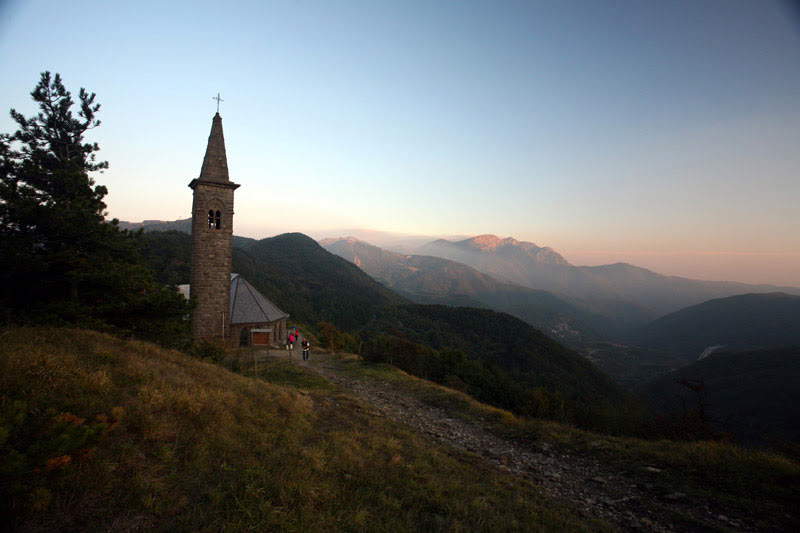 |
| The Cisa Pass (Via Francigena) |
3.The Linari Way
The Via di Linari, 135 km of which 110 in Emilia, in ancient times constituted an alternative route to the Via Francigena along the so-called Via del Sale: it starts from Fidenza and ends at the Lagastrello Pass, on the border with the province of Massa and Carrara, passing through the city of Parma. It owes its name to the Abbey of Linari, of which only ruins are now preserved, on the border between Tuscany and Emilia. Part of the route winds through mountain trails in an area of great natural beauty in the Tuscan-Emilian Apennines National Park. The route of the Linari Way is punctuated by Romanesque jewels such as the parish churches of Badia Cavana and Moragnano and places of hospitality such as the Abbey of Santa Maria della Neve in Torrechiara overlooked by the castle and its village. Like all religious paths, it also represented an important commercial artery in the Middle Ages: in fact, it was the road by which salt commodities from the Tyrrhenian coast reached Parma. To learn more you can visit the Visit Emilia website.
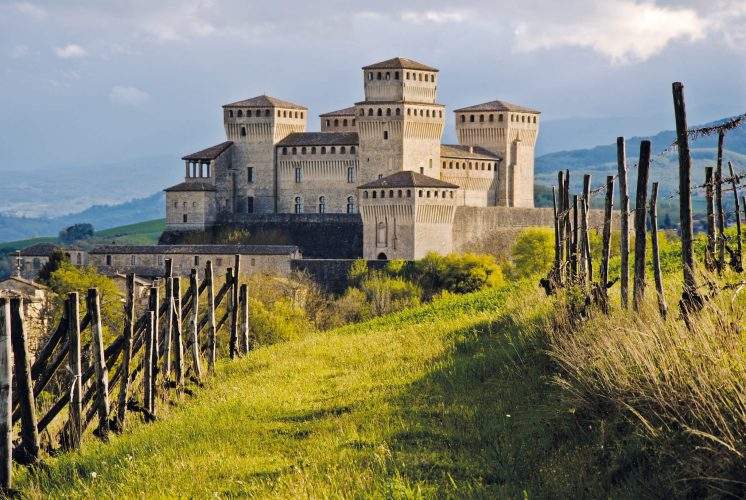 |
| The Castle of Torrechiara (Via di Linari) |
4.The Abbots’ Way.
The Via degli Abati, a route through the mountains punctuated by ancient monasteries, joins Pavia and Pontremoli and in the Emilia section touches villages such as Bobbio, Bardi, and Groppallo: it was the route traveled by pilgrims and before that by Lombard rulers to cross over the mountains of Parma and reach Rome. The route is 190 km long and travels along mountain paths (the route is also marked CAI), mule tracks, valleys and mountain ridges for a total elevation gain of more than six thousand meters, providing exciting views. At one time, the Via degli Abati was traveled mainly by Irish monks, who chose it as an alternative to the Via Francigena because it allowed them to stop at the abbey of St. Columba in Bobbio to venerate the remains of the great Irish abbot and father, with St. Benedict, of European monasticism. The Via degli Abati also has its own official website.
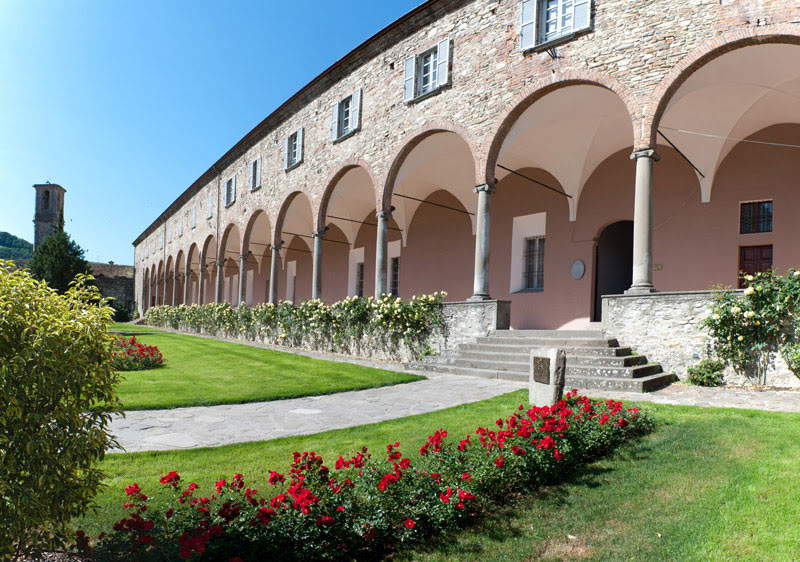 |
| The Abbey of San Colombano in Bobbio (Via degli Abati) |
5. The Way of St. Anthony
The Way of St. Anthony joins the small town of Camposampiero in the province of Padua (in the village’s monastery, St. Anthony spent the last part of his life) to the sanctuary of La Verna in Tuscany: in all, there are 410 km, 258 of which are in Emilia-Romagna. The route runs between the plains of Veneto, Romagna and Emilia and bypasses the Apennines to arrive in Casentino, in an itinerary punctuated by monasteries, hermitages, villages, and large towns. Must-see stops include Ferrara with its monuments, the city of Bologna (where pilgrims are wont to stop at the Sanctuary of San Luca), and some splendid villages such as Modigliana, the birthplace of the great painter Silvestro Lega, who was always linked to the town that gave him birth, or like Rocca San Casciano, a medieval village that stretches over a hill, dominated by its 12th-century fortress. For more information you can visit the official website.
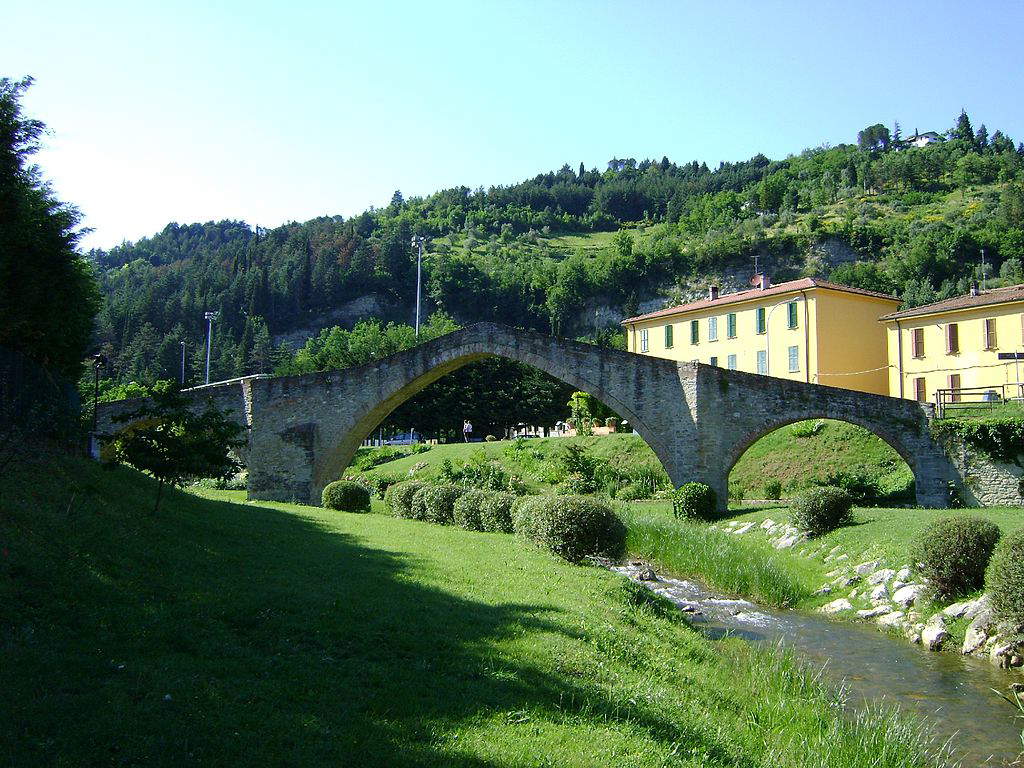 |
| The San Donato Bridge in Modigliana (Way of St. Anthony) |
6. The Way of St. Francis from Rimini to La Verna.
This route, 110 km long, 98 of which are in Emilia-Romagna, was opened in 2013 and roughly follows the journey that St. Francis of Assisi made in the Marecchia Valley in 2013: it takes about five days to walk the entire route, which takes pilgrims from Rimini, on the shores of the Adriatic Sea, to the sanctuary of La Verna, in Casentino, following the Marecchia Valley. In addition to being a fascinating religious route (by following it it is possible to re-enact the saint’s journey), it is one of the most valuable from a historical-artistic point of view: think of the wonders of Rimini, starting with the Malatesta Temple, the Fortress of San Leo, and the ancient village of Sant’Agata Feltria (which, moreover, is one of the main Franciscan sites in Montefeltro). All information can be found on the official website.
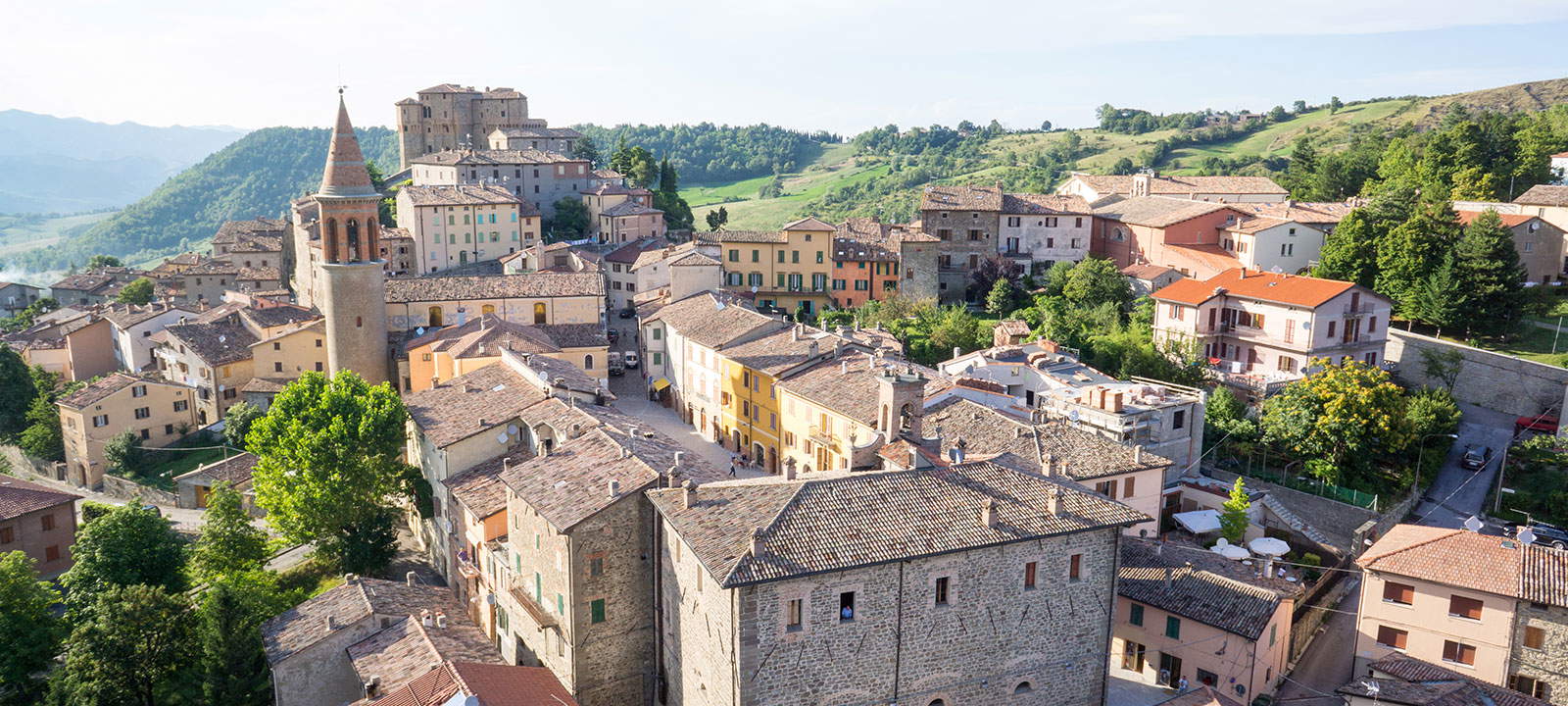 |
| Sant’Agata Feltria (Saint Francis’ Way from Rimini to La Verna) |
7. The Way of Assisi.
A long journey that connects Emilia-Romagna to Umbria via Tuscany, starting in Dovadola, on the Forlivese Apennines (a village where the Hermitage of Montepaolo is located, which hosted St. Anthony of Padua between 1221 and 1222: it was the Portuguese saint’s first Italian home) and ending in Assisi. The path is 290 km long, 72 of which run through Emilia-Romagna. In the Emilia section, the path does not touch any major cities, but unravels through charming villages such as Modigliana, Tredozio, Premilcuore, Rocca San Casciano, Santa Sofia and several others. To learn more you can visit the official website of the Cammino.
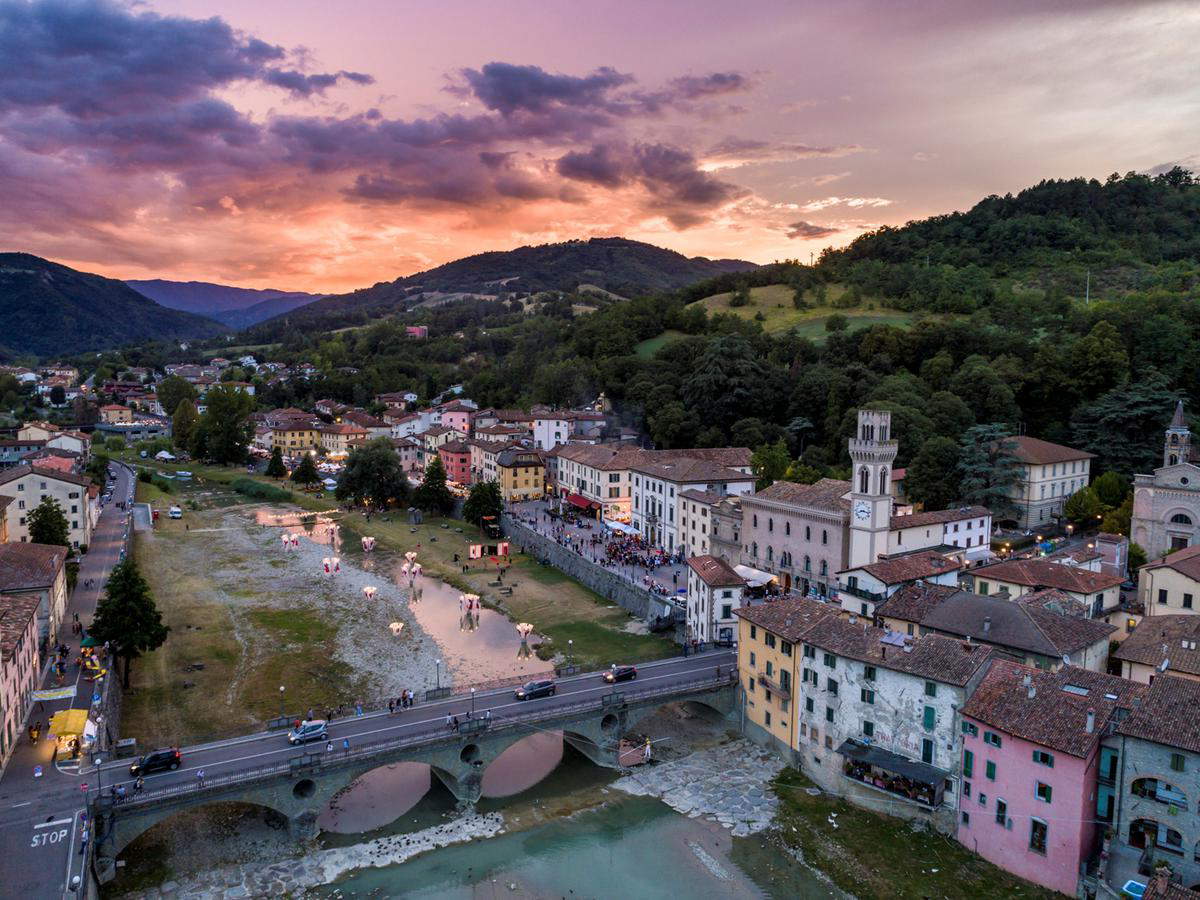 |
| Santa Sofia (Way of Assisi). Ph. Credit Andrea Bonavita |
8. The Way of St. Vicinius
This is a loop that crosses the provinces of Forli, Arezzo and Rimini, in the places where Saint Vicinius, the first bishop of Sarsina between 303 and 330 AD, conducted his work of evangelization. The itinerary is 300 km of which 210 are in Emilia Romagna, with departure and arrival in Sarsina, and with different stages that lend themselves to all types of travelers: with children, on horseback, with pack animals, on mountain bikes, routes for the disabled. The journey passes through all the places of St. Vicinio: the basilica dedicated to him that stands in his town, Sarsina, the hermitage where he had retired (on the mountain named after him, Mount San Vicinio), the parish church of Santa Maria Annunziata in Montesorbo. And again, the journey passes through the city of Cesena, the village of Bagni di Romagna, and beautiful natural landscapes such as the crags of Verghereto, a rocky cliff that lies a short distance from Mount Fumaiolo, where the Tiber has its source. The San Vicinio Trail also has its own official website.
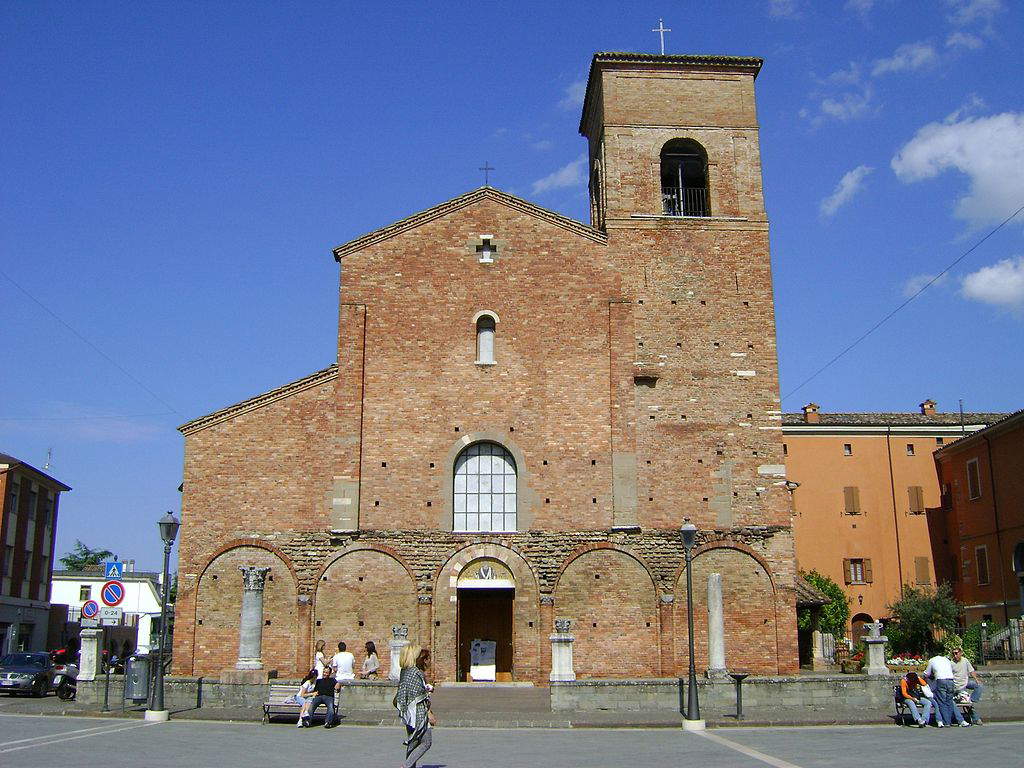 |
| The Basilica of San Vicinio in Sarsina (Way of San Vicinio) |
9. Via Romea Germanica Imperiale
The route joins Trento and Arezzo, running 550 km, 160 of which are in Emilia-Romagna: the route is part of the system of the Germanic Romanesque roads and in ancient times was beaten both by the marching armies that used it to cross Italy, by merchants carrying their goods around the peninsula, and by pilgrims. This road has always facilitated communication between northern and southern Italy: suffice it to say that, from Trento to Modena, it runs close to the route of today’s Brenner freeway, and then at Modena take the route to Abetone. Mountains, plains, great rivers, art towns-it is a varied itinerary suitable for different types of travelers. In Emilia, the journey touches Modena, Sassuolo, Pavullo nel Frignano. In the Modena Apennines, the devotional route comes into its own by passing through the places of St. Bartholomew, such as Fiumalbo in Emilia and Cutigliano in Tuscany (one crosses the Abetone Pass), to arrive at the church dedicated to him in Pistoia. For all information you can visit the walk’s website.
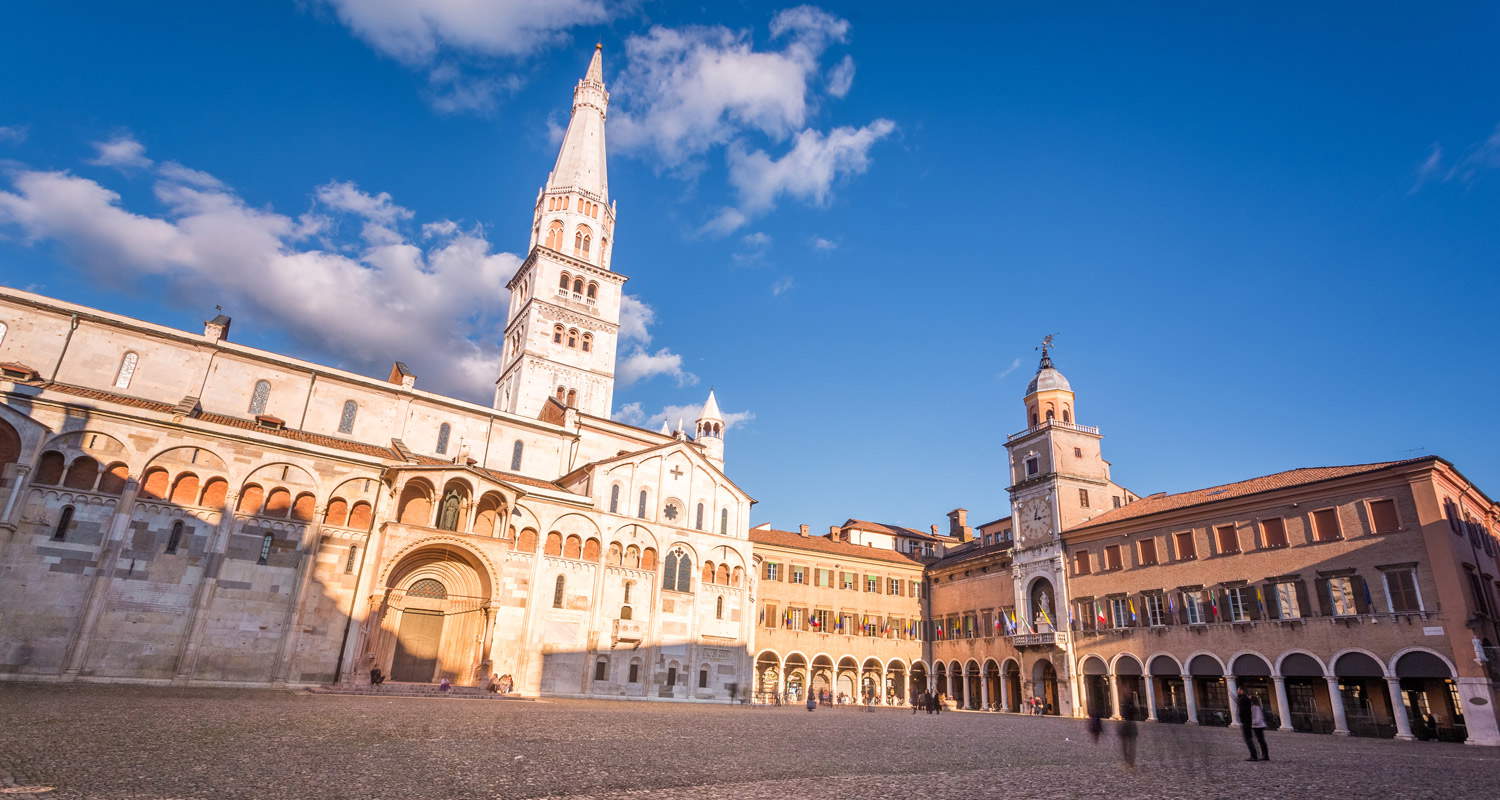 |
| Modena (Via Romea Germanica Imperiale) |
10. Viae Misericordiae
This is the most recent path: in fact, it was opened in 2015 by the Diocese of Faenza on the occasion of the Extraordinary Jubilee of Mercy called by Pope Francis. It is a spiritual path “ad Iesum per Mariam,” that is, to encounter Jesus through the merciful embrace of Mary: for this reason, the itinerary touches many places of devotion to Our Lady. It starts from the Abbey of Pomposa on the Adriatic Sea and arrives at the hermitage of Gamogna in the high Tuscan-Romagna Apennines, with an itinerary of 245 km of which 225 km are in Emilia-Romagna. It is another artistically fascinating route: just think that it passes through towns such as Comacchio, Faenza, Bagnacavallo, and Modigliana, in other words, small capitals of art, each with its own peculiarities, in a very varied landscape, from the sea to the mountains. For any information you can visit the official website of the walk.
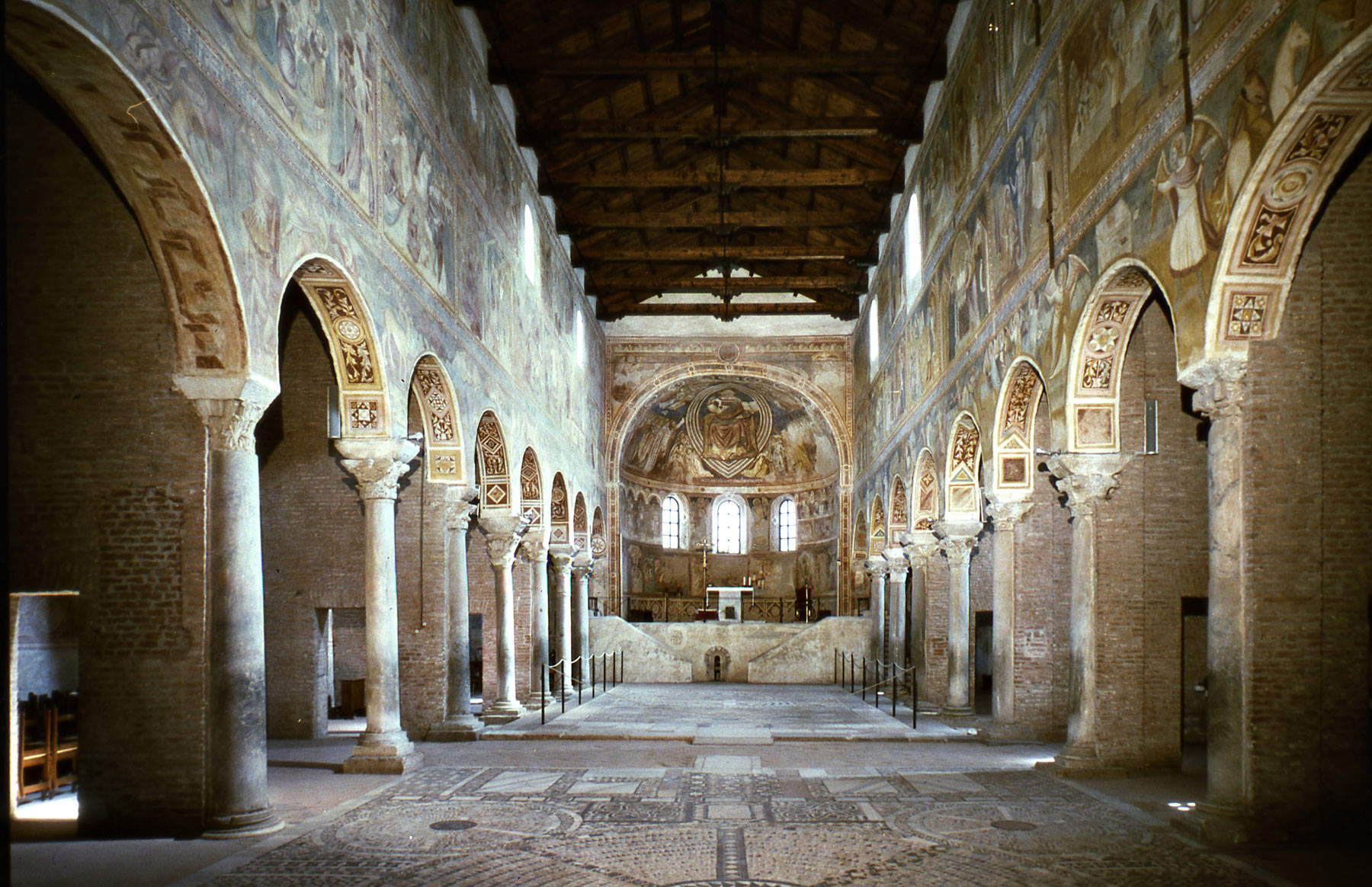 |
| The Abbey of Pomposa (Viae Misericordiae) |
 |
| 10 pilgrimage paths in Emilia Romagna, routes between art and the sacred |
Warning: the translation into English of the original Italian article was created using automatic tools. We undertake to review all articles, but we do not guarantee the total absence of inaccuracies in the translation due to the program. You can find the original by clicking on the ITA button. If you find any mistake,please contact us.